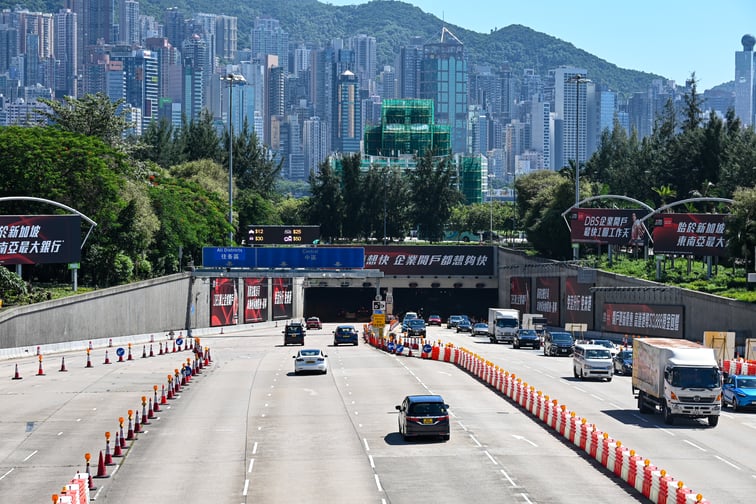

As cross-border travel between Hong Kong and Mainland China increases, the Hong Kong Consumer Council is advising drivers to evaluate their insurance coverage to ensure they have adequate protection.
A recent analysis of local insurers has revealed that purchasing additional commercial motor insurance is highly recommended for Hong Kong vehicles traveling into the Mainland, as the basic compulsory motor insurance may not be sufficient to cover all liabilities in case of an accident.
Hong Kong vehicles entering Mainland China must carry Mainland compulsory traffic accident liability insurance, or compulsory motor insurance, which provides a minimum coverage of RMB200,000 per incident. However, the Consumer Council’s recent survey of 12 local insurers highlighted concerns that this coverage might be insufficient for many drivers.
To better protect themselves and their passengers, the council advised drivers to consider buying commercial motor insurance – third-party liability and persons-on-board liability policies.
The survey revealed substantial variation in premiums among insurance companies. For vehicles with fewer than six seats, the annual premium for compulsory motor insurance ranged from HK$832 to HK$1,159, while vehicles with six to eight seats had premiums between HK$963 and HK$1,342.
While premiums varied by nearly 40% between insurers, coverage limits remained the same across the board. These limits included RMB180,000 for third-party bodily injury or death, RMB18,000 for medical expenses, and RMB2,000 for property damage.
One critical difference between Hong Kong and Mainland China’s insurance systems is that the compulsory insurance in the Mainland does not cover passengers in the vehicle.
To address this gap, motorists should purchase persons-on-board liability insurance, which covers passengers in case of an accident. However, the maximum limit of RMB200,000 per passenger, offered by many insurers, may still be inadequate for more serious incidents, according to the Consumer Council.
The recommendation for enhanced coverage comes as China’s motor insurance market is experiencing strong growth.
According to GlobalData, the market is expected to expand by 5.4% annually through 2028. The increase in vehicle sales, particularly of NEVs, is a significant factor contributing to this growth.
The China Association of Automobile Manufacturers (CAAM) reported that vehicle sales rose by 10.6% in the first quarter of 2024, totalling 6.72 million units.
New energy vehicles, including electric and hybrid models, made up 30% of total vehicle sales in 2023, and this trend is expected to continue, thanks to government incentives. In June 2023, the Chinese government announced tax exemptions and subsidies for NEVs, further encouraging consumers to switch from internal combustion engine vehicles.
With the rise in NEV sales, motor insurance demand is increasing, as these vehicles often come with higher insurance premiums due to their costly components, such as batteries. The growing number of NEVs on the road, coupled with regulatory support, is expected to drive the long-term growth of China’s motor insurance market.
The Consumer Council has also called on insurers and regulators to enhance unilateral recognition insurance products for Hong Kong motorists driving in the Mainland. These products should offer higher indemnity limits and more comprehensive coverage options to better meet the needs of cross-border travellers.
Currently, there are significant pricing discrepancies for additional commercial motor insurance – third-party liability coverage, which can provide more protection in case of an accident.
The council’s survey found that premiums for third-party liability insurance offering RMB2 million in coverage ranged from HK$1,009 to HK$1,666 for vehicles with fewer than six seats, and from HK$1,194 to HK$1,941 for vehicles with six to eight seats – a difference of more than 60%. These disparities highlight the importance of shopping around for insurance policies that best suit individual needs.
The council further emphasised that when purchasing persons-on-board liability insurance, drivers should carefully assess whether the limits offered by insurers are adequate for their level of risk. Currently, only one of the surveyed insurers offers coverage of RMB200,000 per passenger, with most others providing significantly lower limits.
For Hong Kong motorists traveling northbound, the Consumer Council advises verifying that insurance policies and vehicle permits are valid before departure.
Drivers should also familiarise themselves with Mainland China’s traffic regulations, which differ from those in Hong Kong. For instance, right turns at red lights are permitted in certain conditions in the Mainland.
In case of an accident, motorists should immediately report the incident to the local traffic authorities in Guangdong and file a claim with their insurer. It is also essential to keep contact information for the insurance company readily available.
